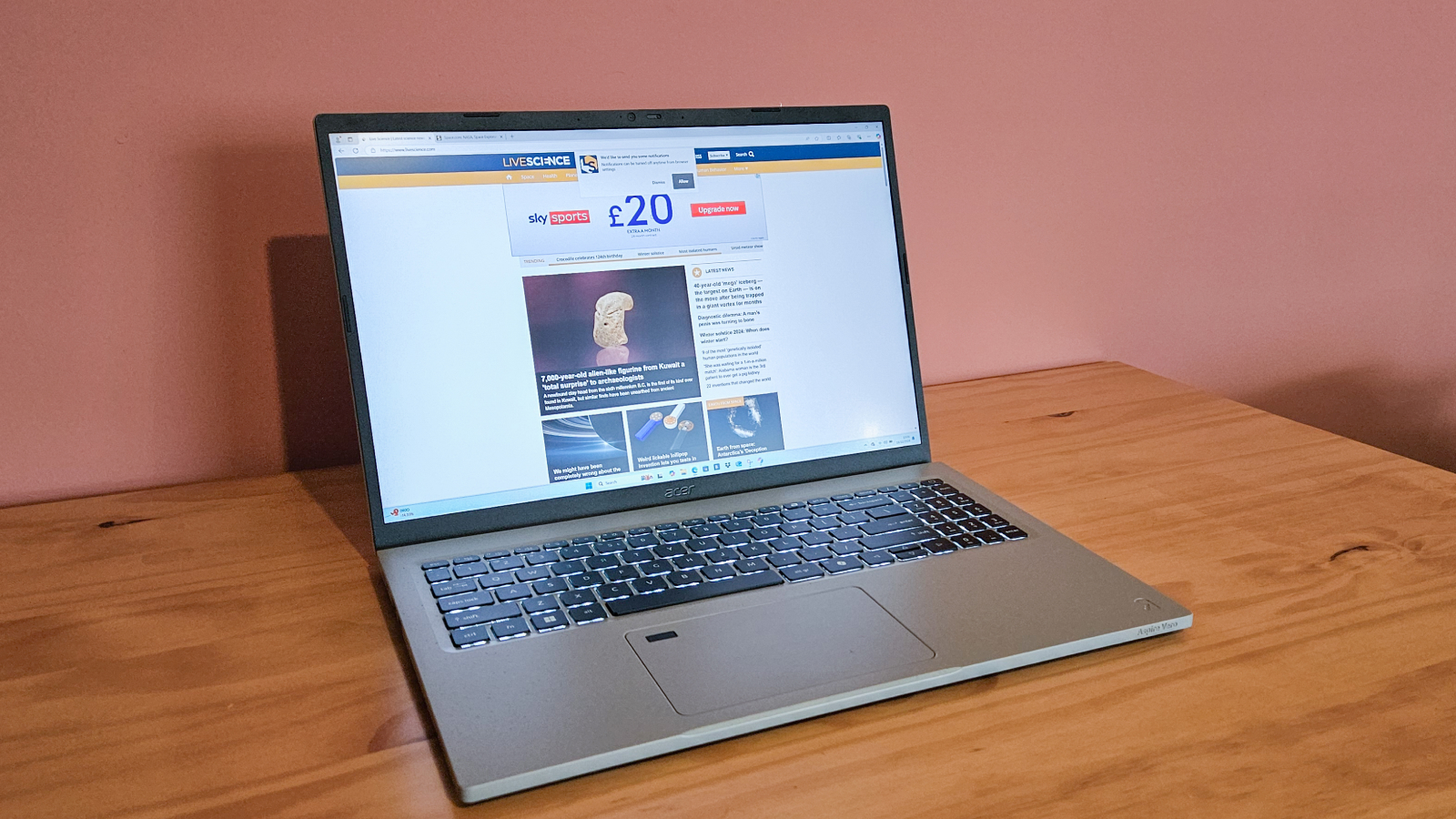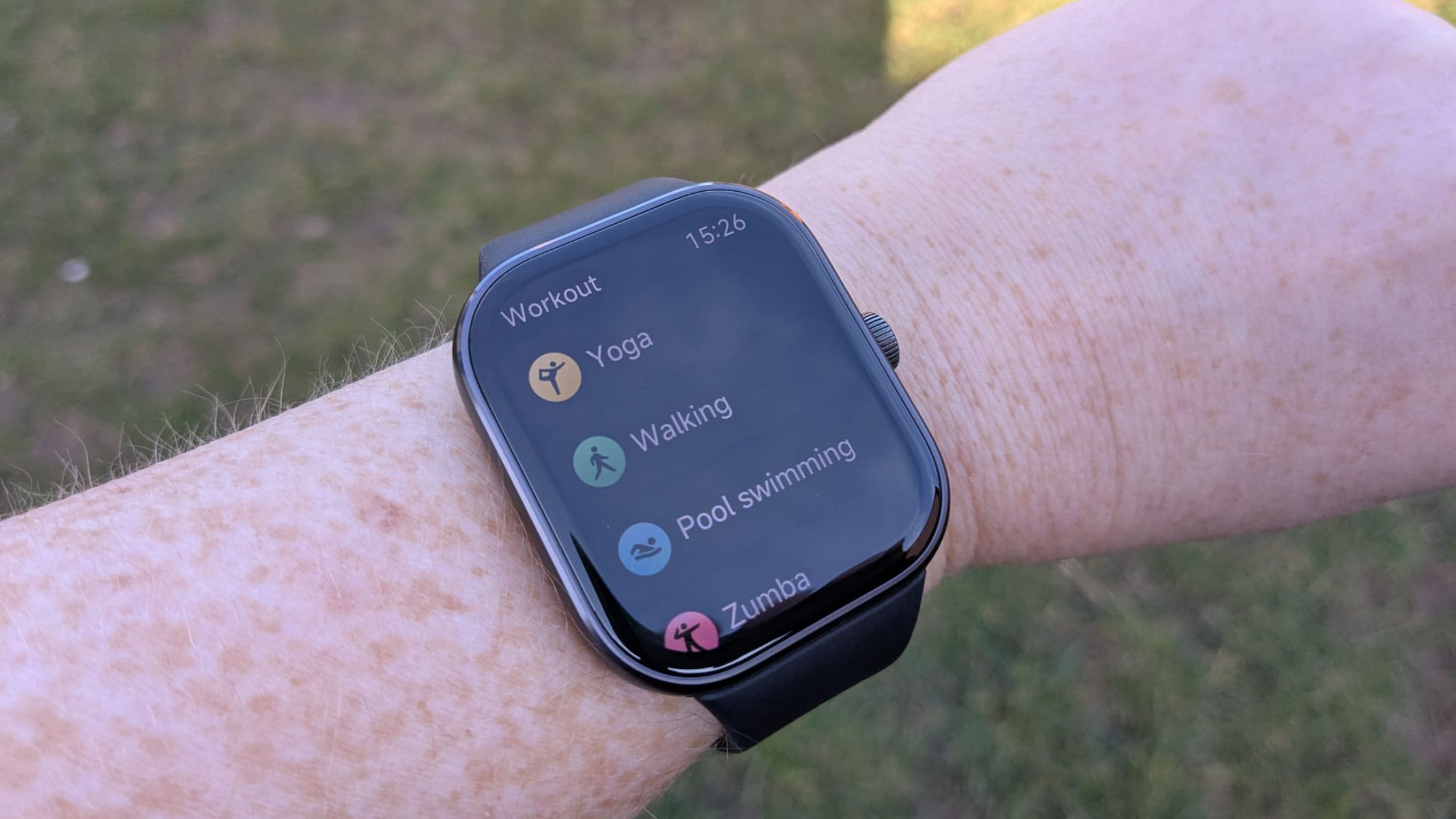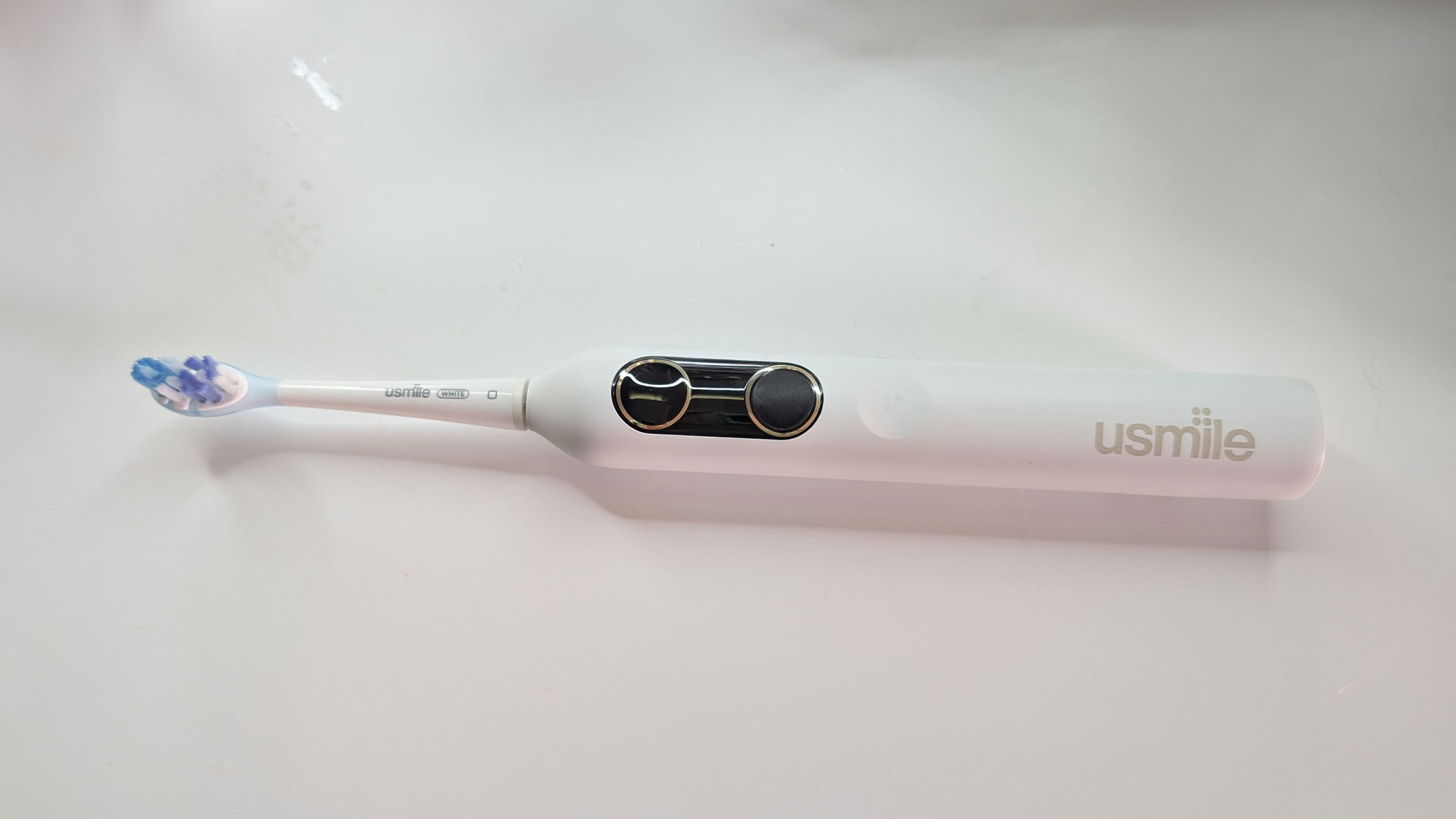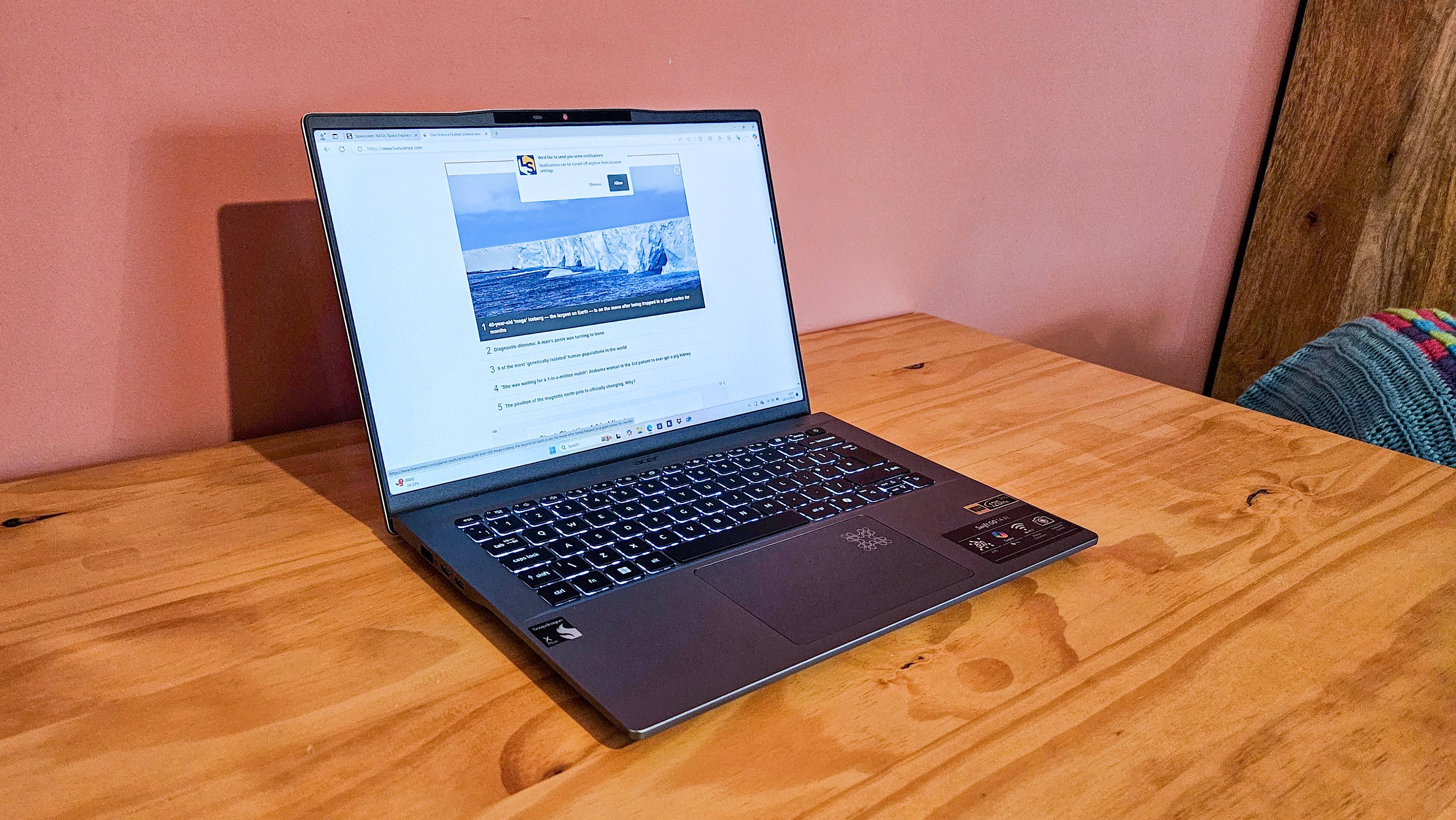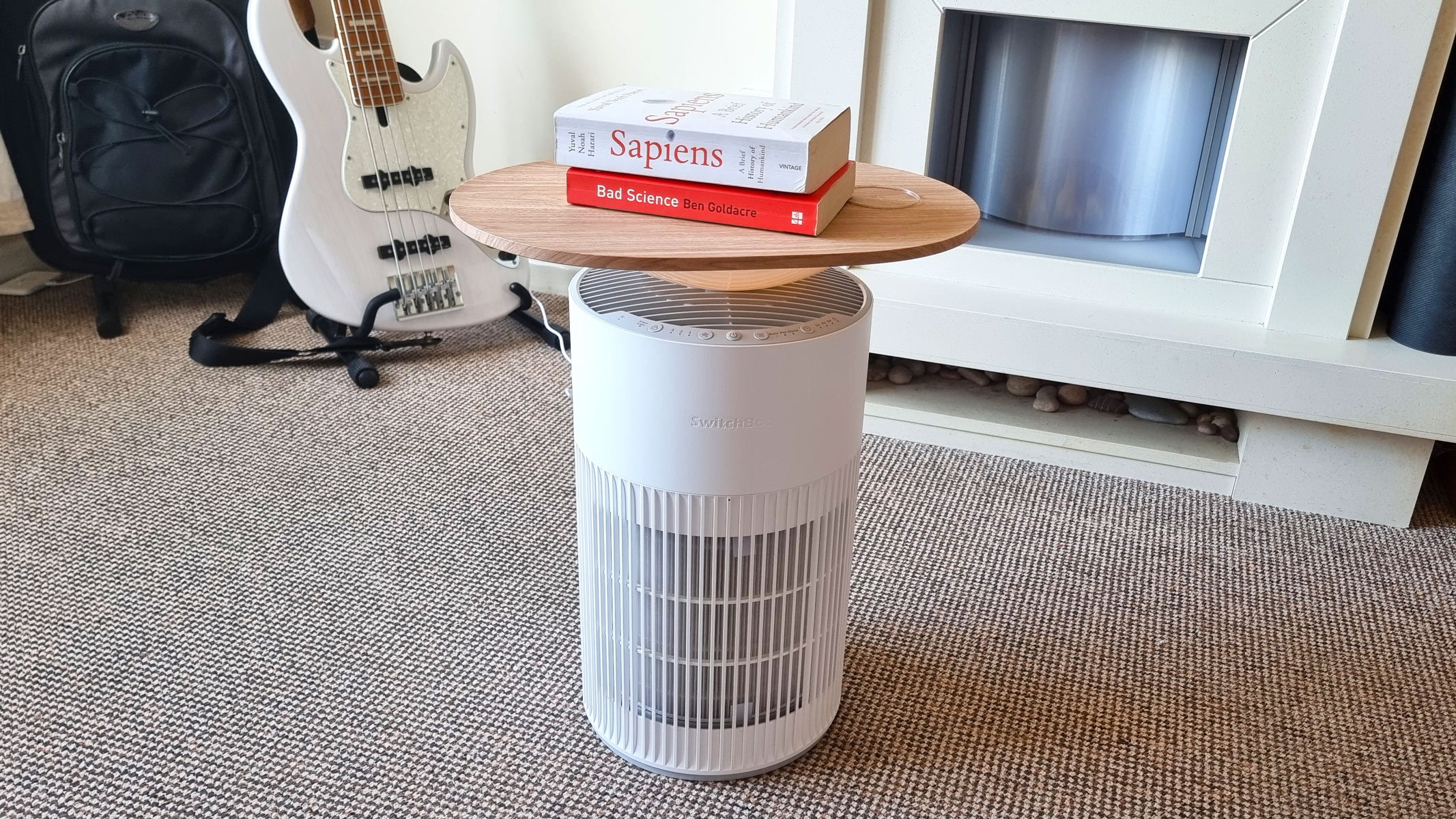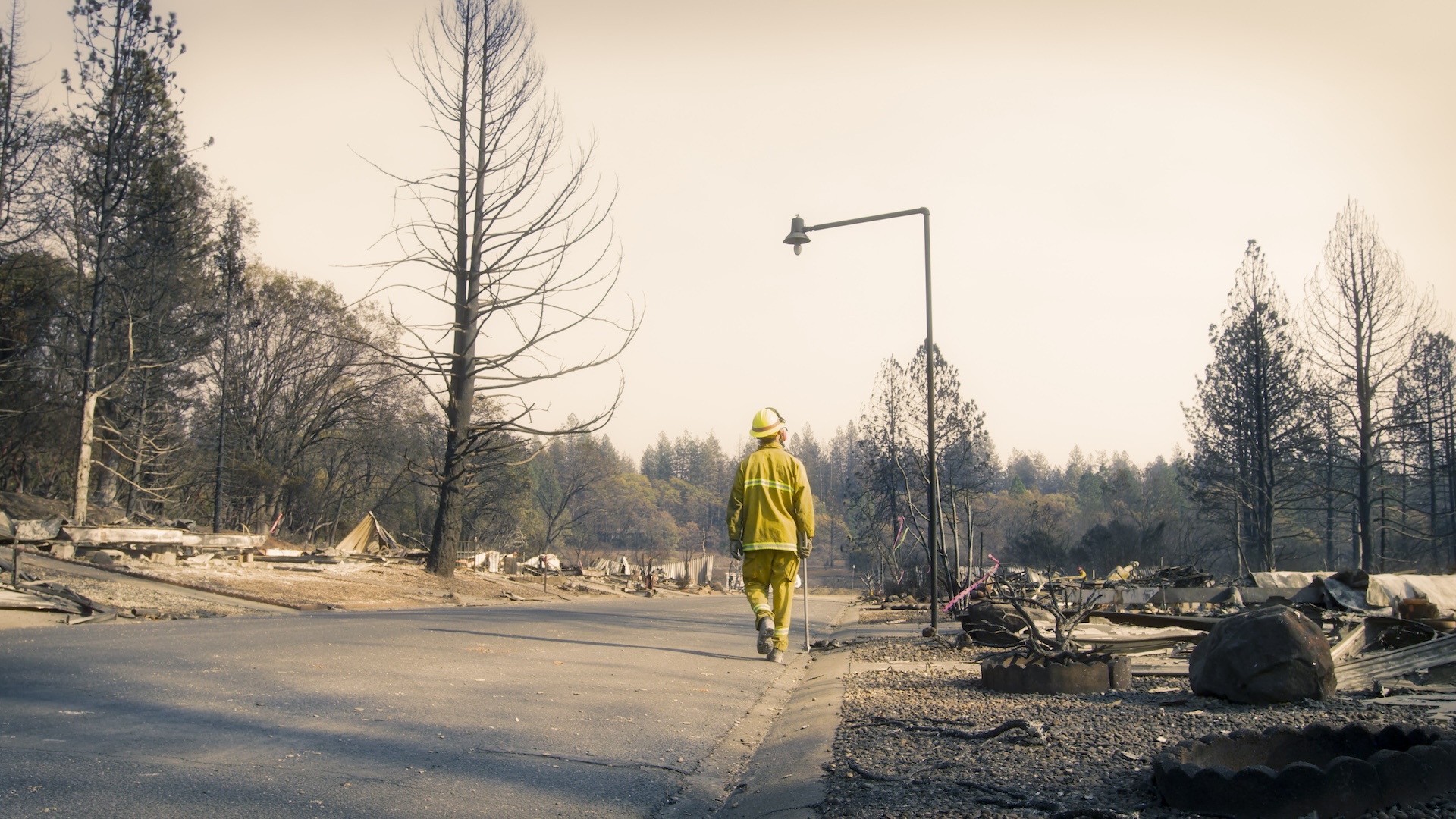Live Science Verdict
The Sony A7 IV is a fantastic all-rounder hybrid camera that performs incredibly well for both images and video, but it's not without its flaws. It was very impressive when it was first released, although, with newer advancements in tech over the recent years, some of the newer models trump it. Still, it's one of the best Sony camera's we've used when it comes to astrophotography.
Pros
- +
Astounding high ISO performance
- +
Very customizable
- +
Good autofocus
- +
Comfortable to hold with good button layout
Cons
- -
Lower battery life than its predecessor
- -
4K 60p video is cropped
- -
A bit bulky to use as a travel camera
- -
Outdated compared to newer models
Why you can trust Live Science
Over two and a half years after its long-awaited release back in 2021, we're testing out the Sony A7 IV to see how it stands up to the competition on the market now in 2024. It was a much-needed upgrade to the Sony A7 III back when it was released, but there have been many advancements in tech over the past couple of years since, so we'll be looking at what this camera offers to see if it's still worth spending your hard-earned cash on in 2024.
In this review, we'll be looking at its design, performance, functionality, who we think it would be best suited for and we'll also offer some alternative options at the end if you want to explore other avenues.
If you want to check out the best cameras in a particular niche, check out the best astrophotography cameras and the best wildlife photography cameras to see how the Sony A7 IV compares.
Editor's note Jan.07: We were able to test out some of its Astro-features after publishing this review, you can read about what we thought in the performance section.
Sony A7 IV review
Sony A7 IV: Design
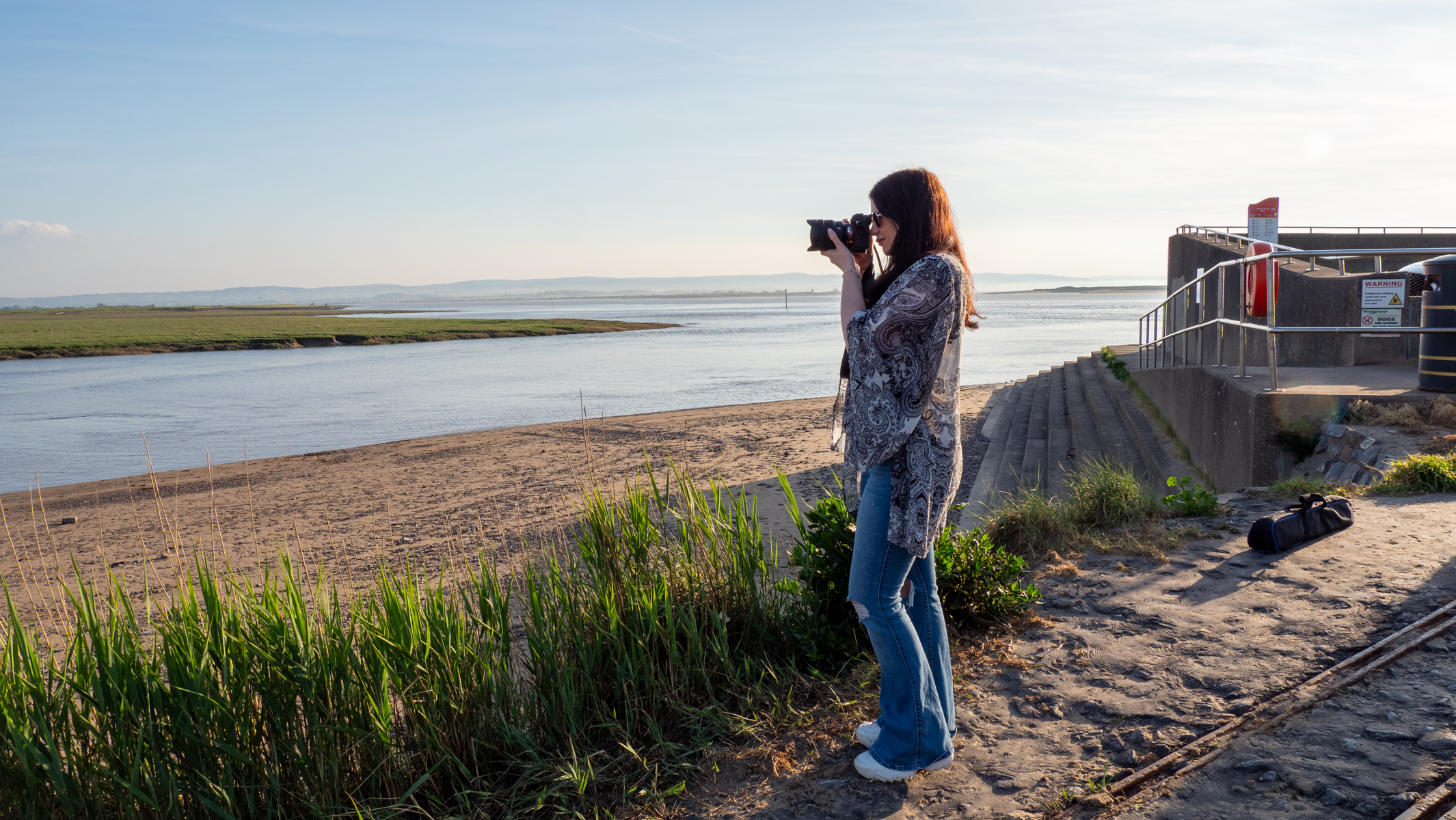
- They've finally added a fully-articulating touchscreen
- Video record button is now in a much better place
- Very ergonomic and comfortable to hold
The ergonomics and 'feel' of a camera will always have an element of subjectivity depending on the user and how big their hands are. Still, with that in mind, we thought the Sony A7 IV was comfortable to hold with all the buttons easily accessible and well-pronounced. We could happily walk around holding the camera in our right hand with just the grip without any fear of dropping it. It didn't feel front-heavy even with a bulky lens attached, and it's only marginally heavier and bigger than the previous model (we're talking <10g and a few millimeters). That said, it could be a bit chunky if you're primarily wanting a lightweight travel camera.
There are a couple of notable improvements from the A7 III which we thought made the camera much more enjoyable to use. The first and most obvious is the long-awaited addition of a fully articulating screen. Most users we've spoken to got very annoyed with the tilt-only screen on the A7 III, so we are glad to see Sony listening to their customers with this newest model.
We really enjoyed the screen on the Sony A7 IV, it makes shooting at awkward angles much easier and it also opens the camera up for shooting selfies or making vlogs. They've improved the screen even further in terms of functionality with the latest model in the R range (you can read the review of the Sony A7R V on our sister site here), so perhaps they'll add a similar improvement whenever the A7 V is released.
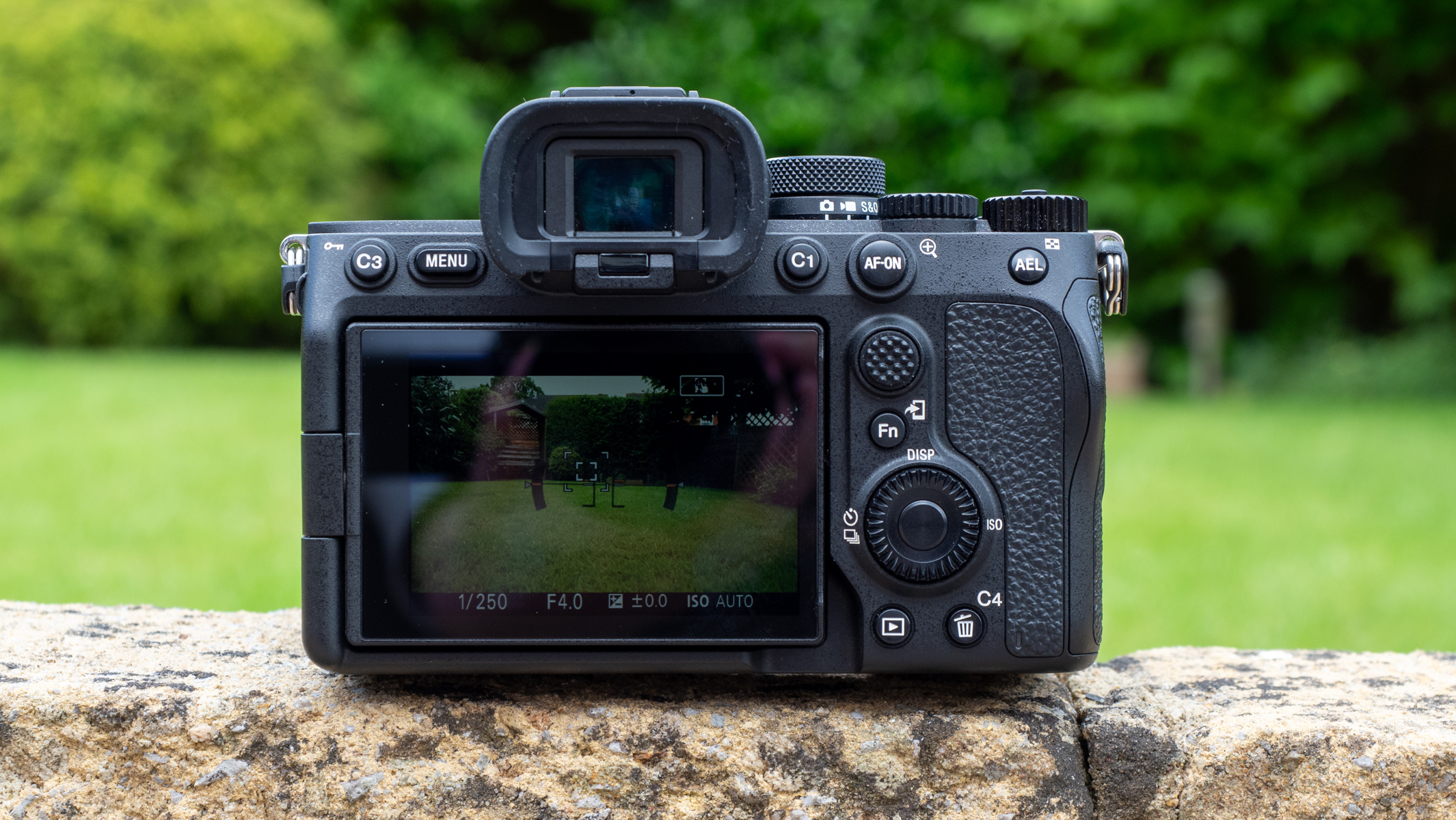

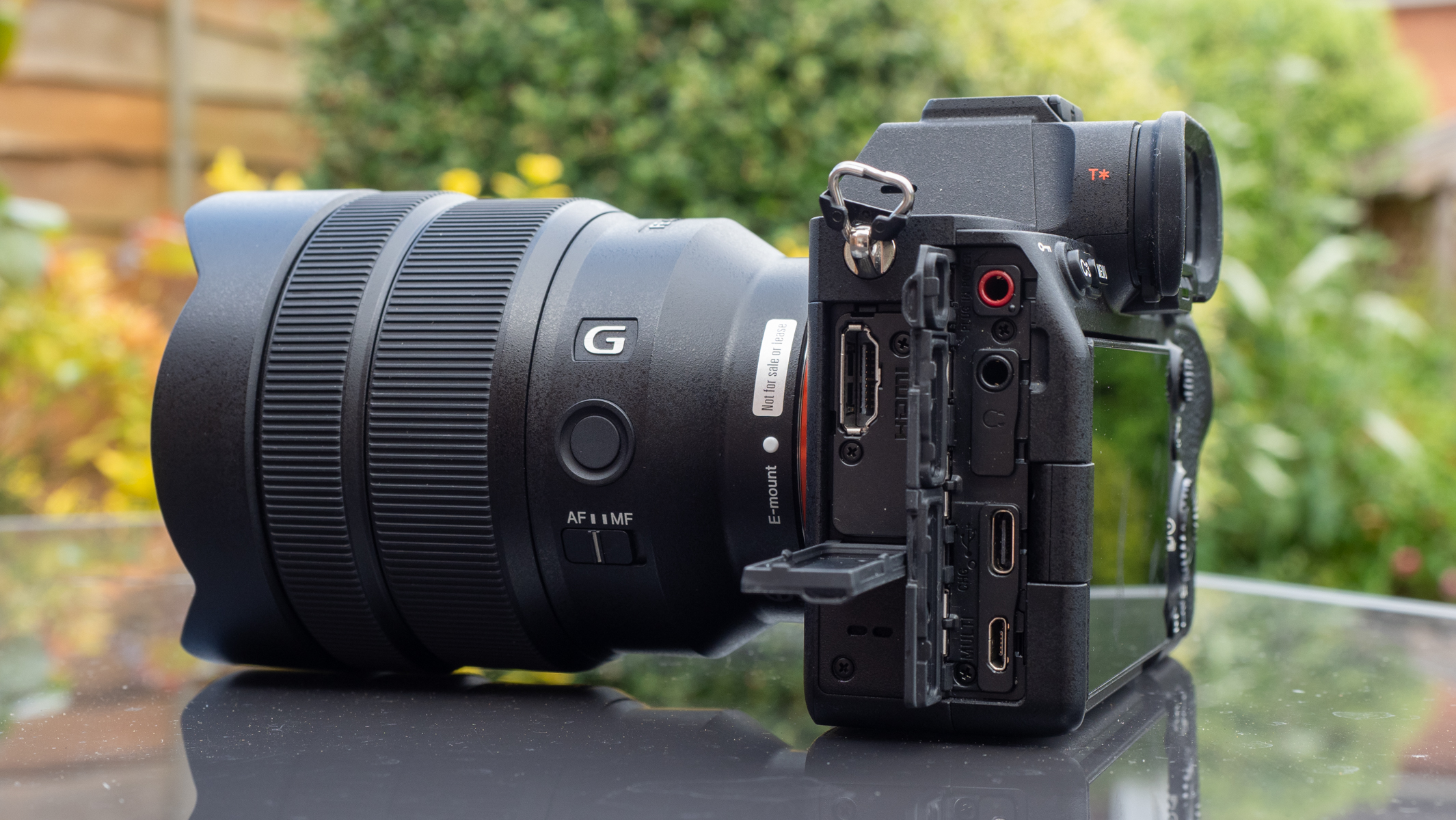
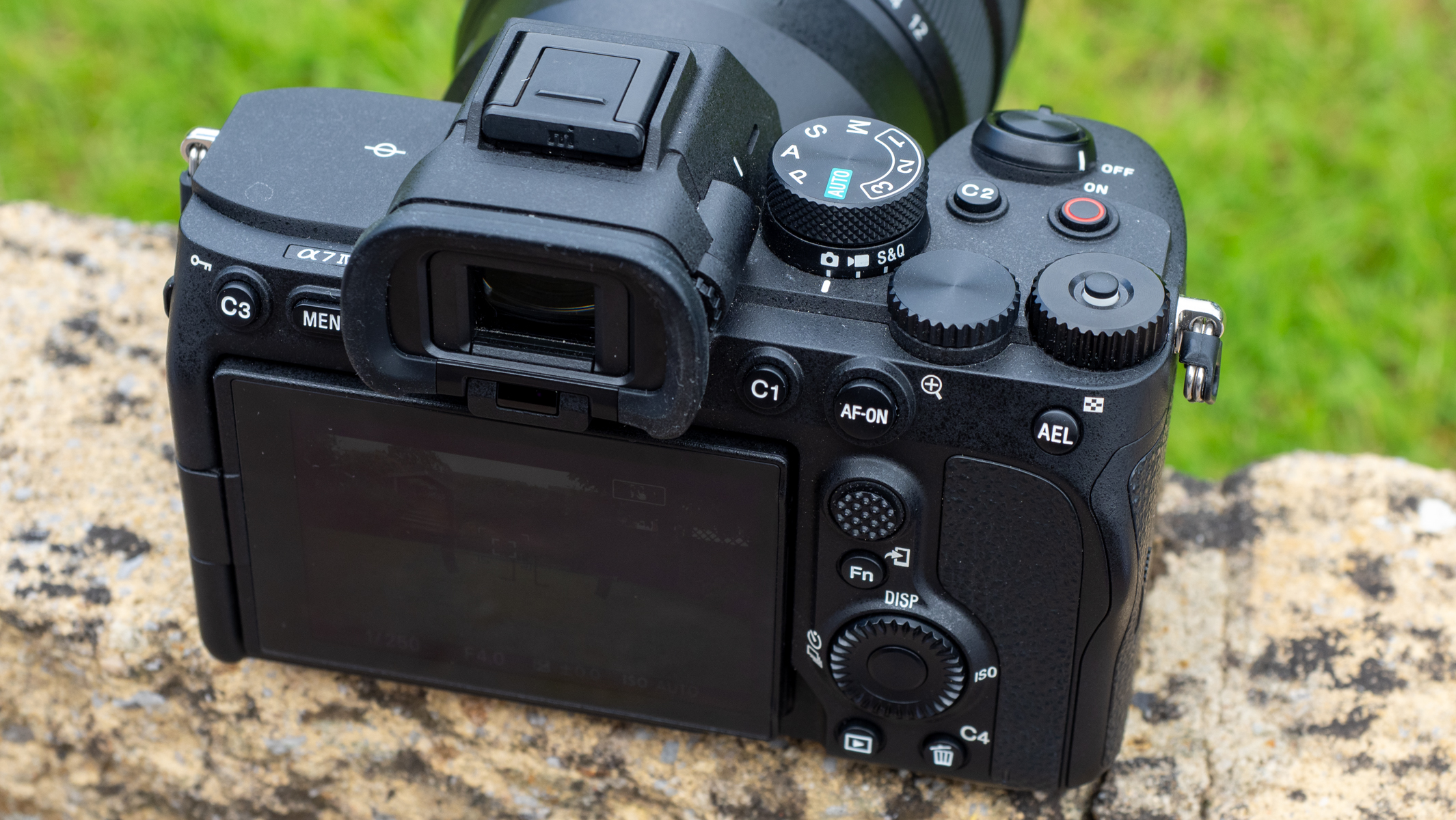
Sensor size: Full frame BSI CMOS
Megapixels: 33MP
ISO range: 100 — 51,200 (expands to 50 - 204,800)
Image stabilization: 5.5 stops
LCD screen: 3-inch fully articulating, 1,036,800 dots
EVF: 3,686,400 dots
Burst rate: 10fps
Video: 4K 30p uncropped, 4K 60p cropped
Card slots: One CFexpress Type A/UHS-II SD, One UHS-II SD
Battery life (CIPA): 580 shots
Weight (inc. battery): 659g (1.45 lb / 23.25 oz)
Dimensions: 131 x 96 x 80mm (5.16 x 3.78 x 3.15-inches)
There are a few other changes in terms of button layout. They've swapped C1 and the video record button around, making it much more pronounced and easier to start recording video with just your forefinger. C1 is now on the back of the camera next to the viewfinder.
They've also changed the pre-programmed exposure compensation wheel on the top of the camera to just a regular control wheel and added a button lock, and the second control wheel on the top of the camera is also now more pronounced. With the same control wheel on the front of the grip and on the back of the body as before, this now means there are four customizable control wheels on the camera in addition to the four custom buttons.
They've also added a sub-dial to the main function wheel, similar to what we've seen on some of the newer models. This sub-dial has separate photo, video and S&Q (slow & quick) options depending on what type of content you want to shoot. With this added function, you can now program the main dial to create three different sets of custom settings for photos, three for video and three for S&Q, adding yet more customization to this camera.
In the side panel, the only small change is the addition of a larger HDMI port, which they've moved to a separate compartment in the side panel. The battery and card slots are still in the same place as on the previous model. It's still got two card slots, but slot 1 is now compatible with CFexpress A cards, which sounds great in theory, but Type A cards are rarer and more expensive than Type B cards. You're probably better off sticking to a fast UHS-II SD card or a regular SD card if you don't need to worry about fast shooting speed.
Sony A7 IV: Performance

- Bright monitoring is a very useful feature for astro
- One of the best high ISO performances of any Sony camera
- Better autofocus than the previous model, but it has since been outdone
The dynamic range in this camera really impressed us. We took it to the woods in the mid-afternoon sun to see how it would fare against the bright light and harsh shadows, and even with an f/4 lens, it handled it effortlessly. We shot skywards directly toward where the sun was breaking through the trees, and you can see from the side-by-side images above how dark the shadows were in the RAW image. When we edited the image in Lightroom, we were easily able to bring back the detail in the shadows and highlights with no trouble at all.
The burst rate could be a potential letdown if you shoot fast-moving subjects. On paper, it says it's capable of 10FPS, but that's only when you shoot in compressed RAW — if you change it down to uncompressed RAW, the burst rate drops to around 6FPS. Either of these speeds fits into the 'it'll do' category for most types of shooting, but if you shoot sports or other fast-moving subjects, it could get frustrating not being able to access faster speeds. We did find this a little annoying during a portrait shoot, but the quality of the images is worth the wait.
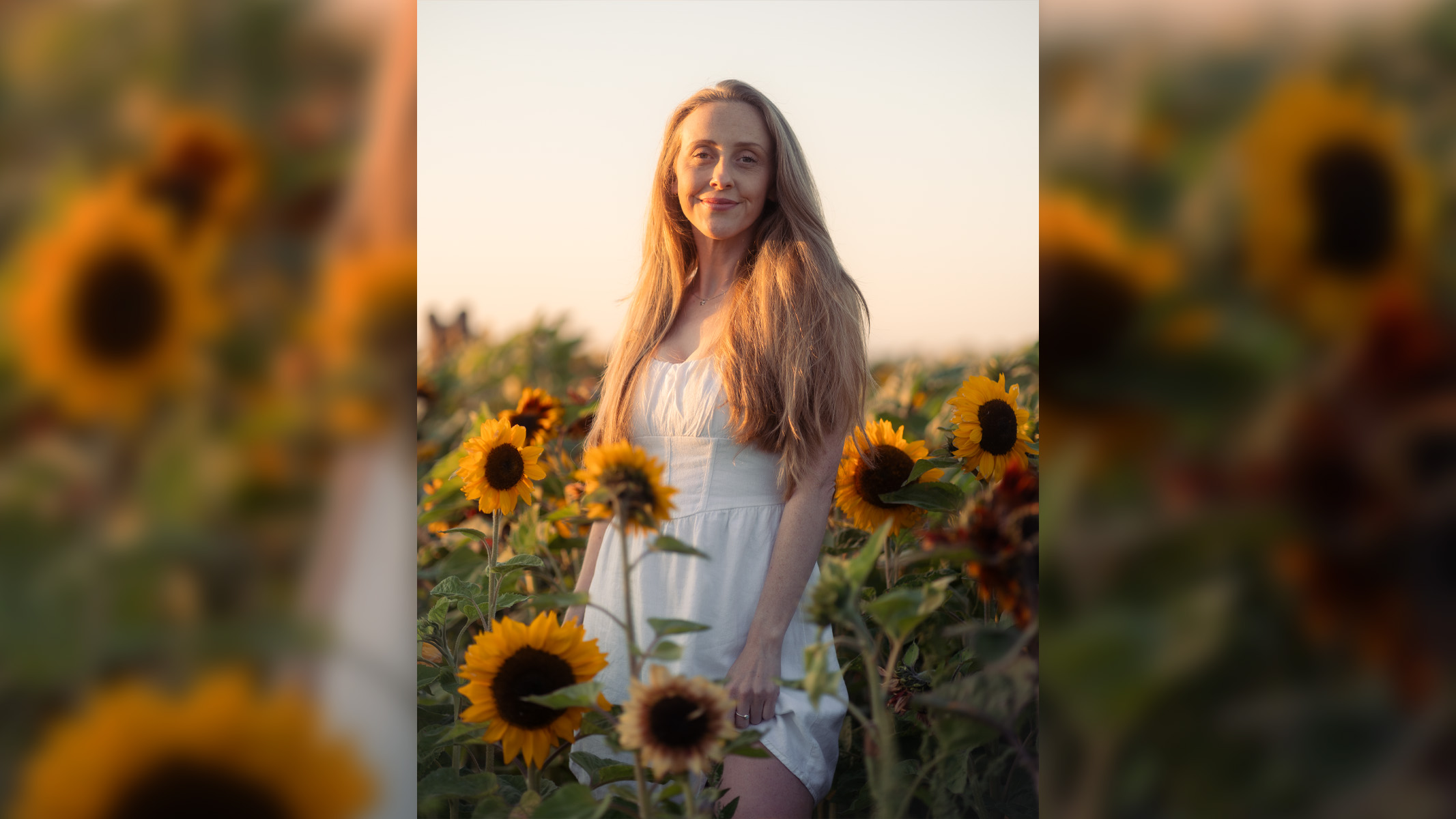
The autofocus performance on the A7 IV is impressive (for when it was released), but we weren't expecting anything less from Sony given their class-leading autofocus reputation. It's of course since been outdone by the AI autofocus in the newer models like the A7R V, A7C II and the crop-sensor A6700, but the AF in the A7 IV is still reliable and effective nonetheless. That's not to say that it isn't a big upgrade from the A7 III though, as it now has eye AF for humans, animals and birds in both photo and video — great news for portrait and wildlife photographers.
We tried the eye autofocus out on a particularly flighty black cat when she decided she would tolerate our reviewer for 5 minutes, and she helpfully insisted that we should test out the ISO performance at the same time by going straight to the darkest point in the entire house. The eye autofocus works quite well in low/bad light situations, although the autofocus on the whole relies on your subject not looking away from the camera otherwise you'll need to find the focus again. Fine for humans, not so great for uncooperative animals.
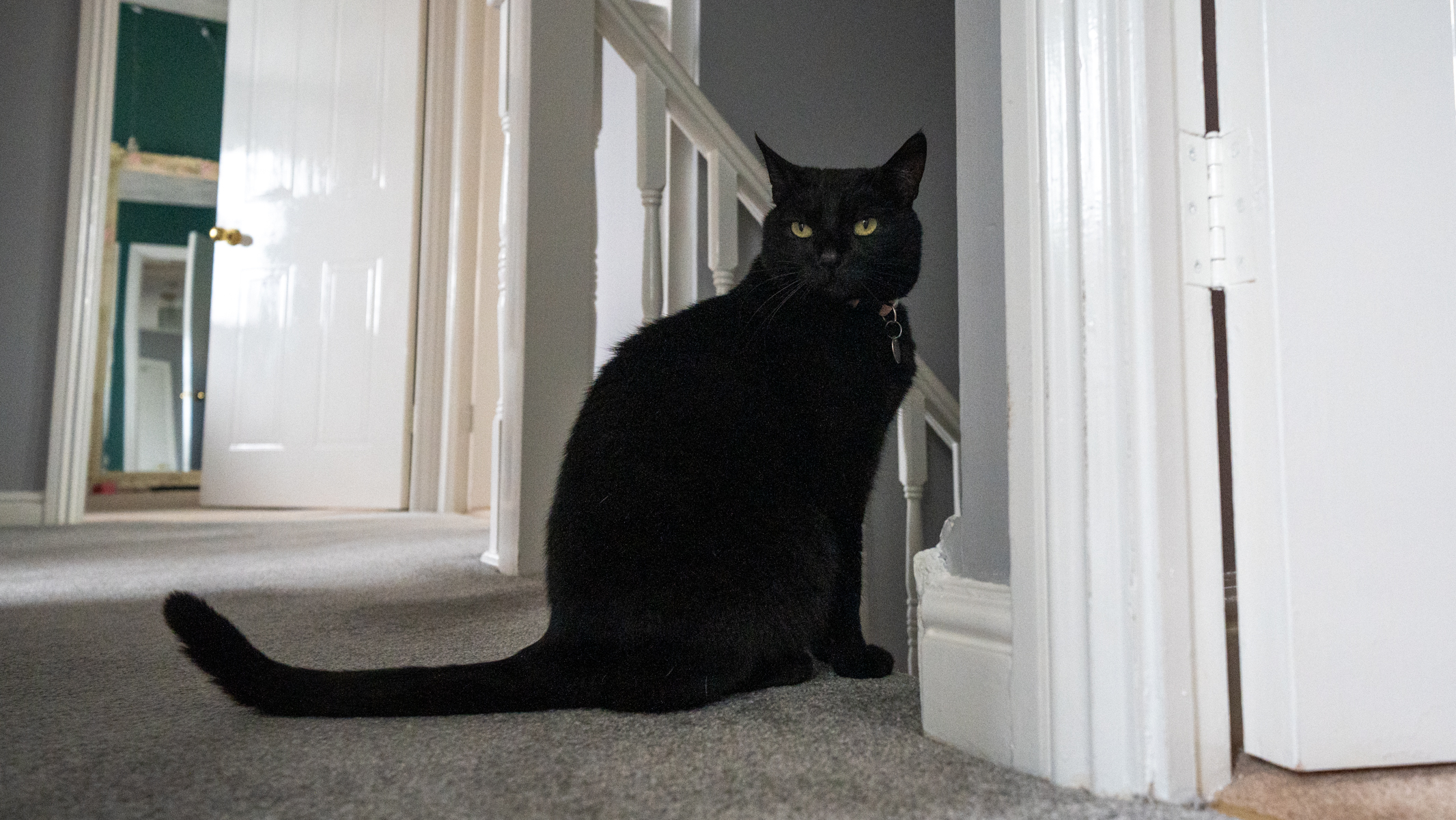
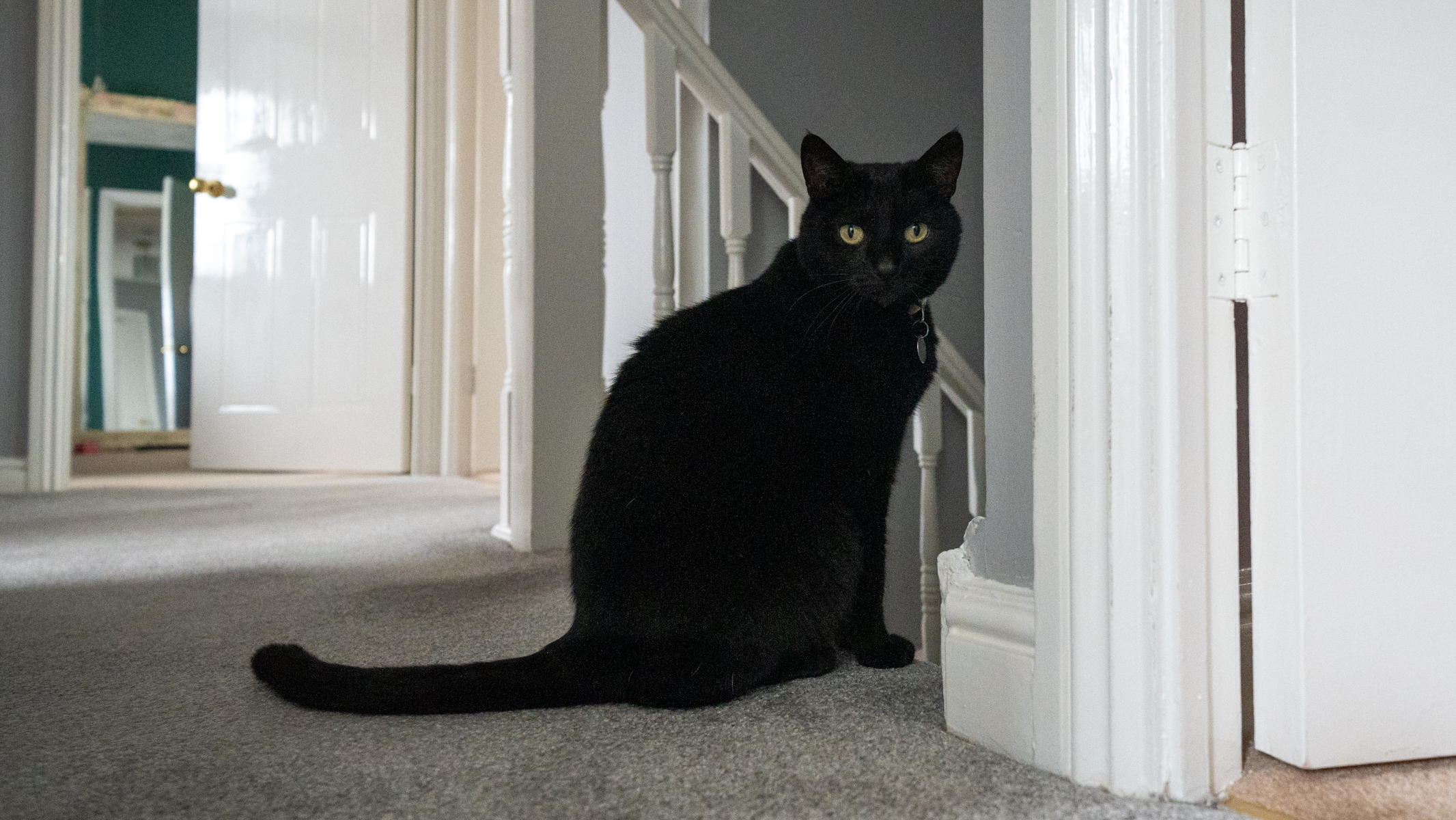
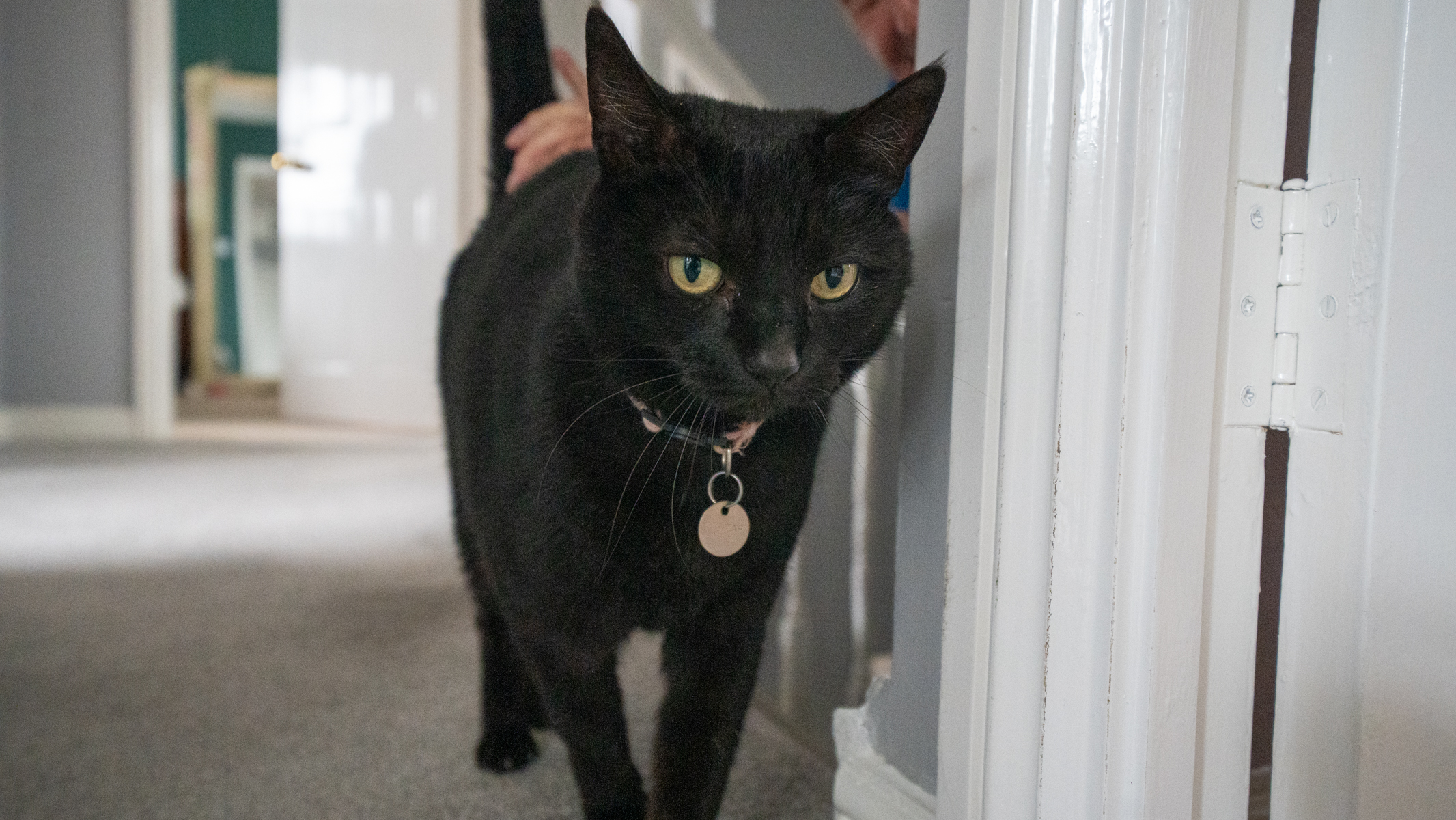
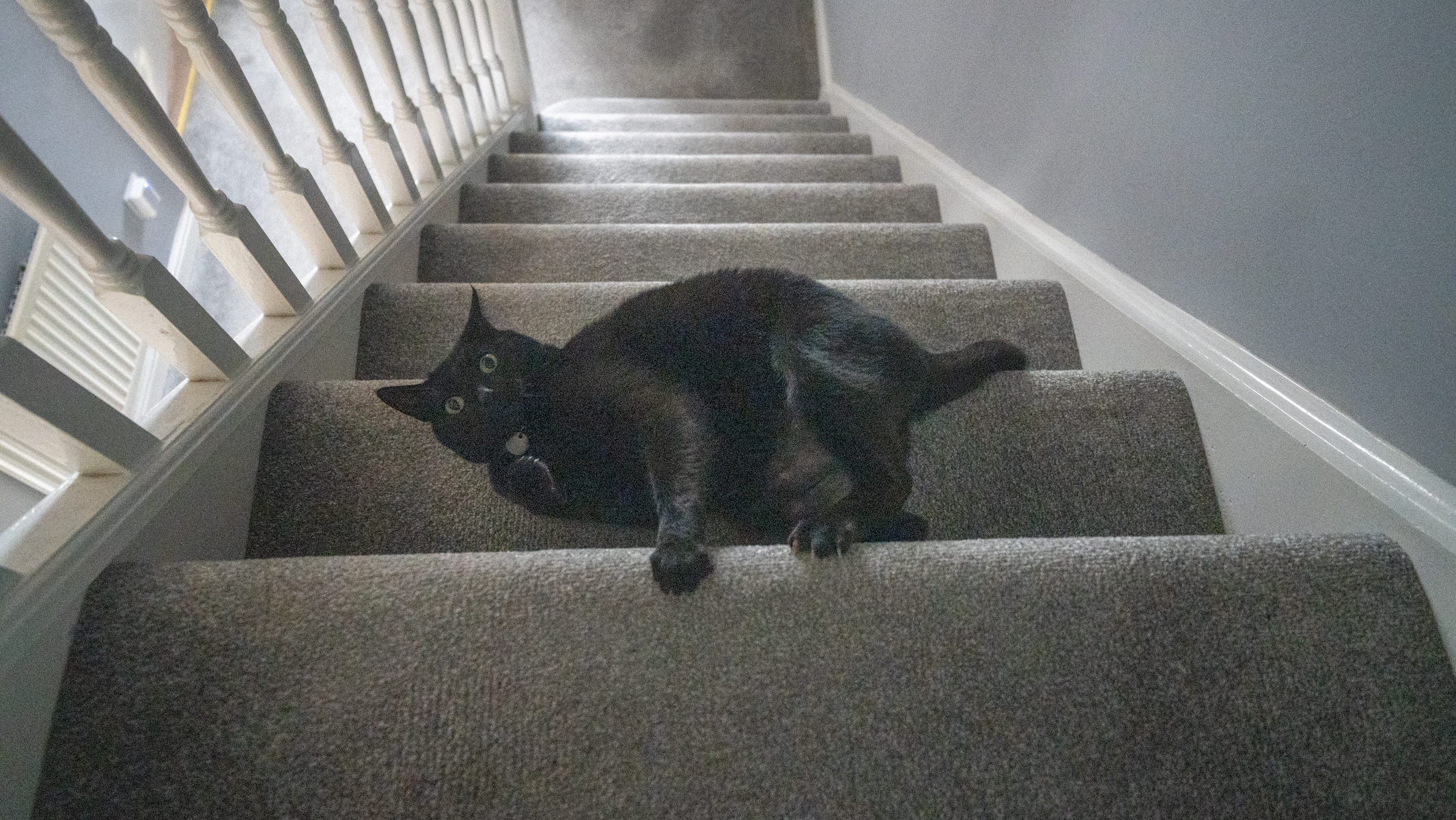
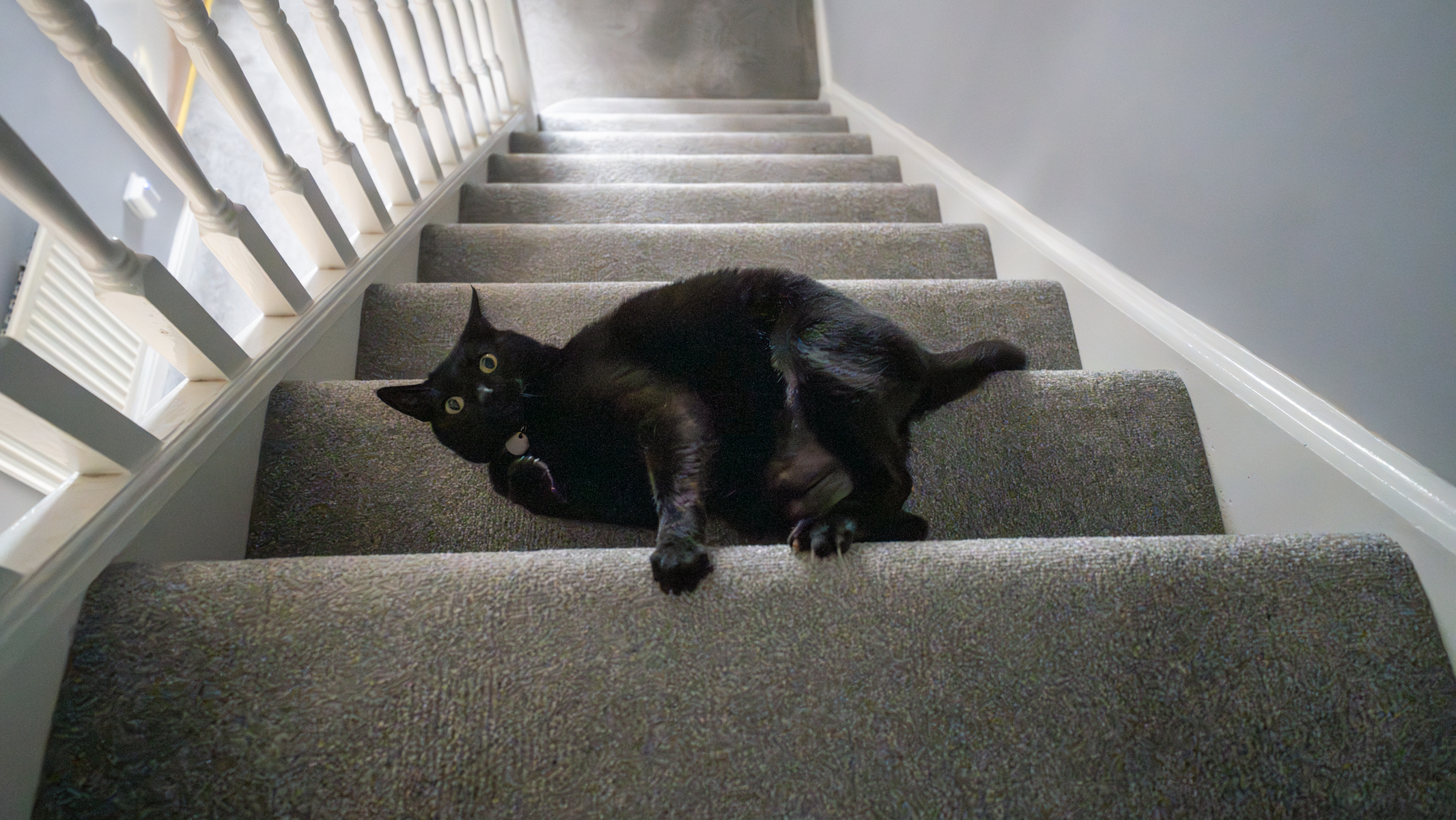
As for the high ISO performance, we shot images at ISO 640, 800, 10,000 and 12,800, and the noise only became obviously distracting at 12,800, and even then, Lightroom's AI denoise tool does a pretty good job of eliminating the noise. If you shoot astro, it may eliminate more of the detail than you'd want, but overall we think the high ISO performance is pretty good so you likely wouldn't need to use much denoise.
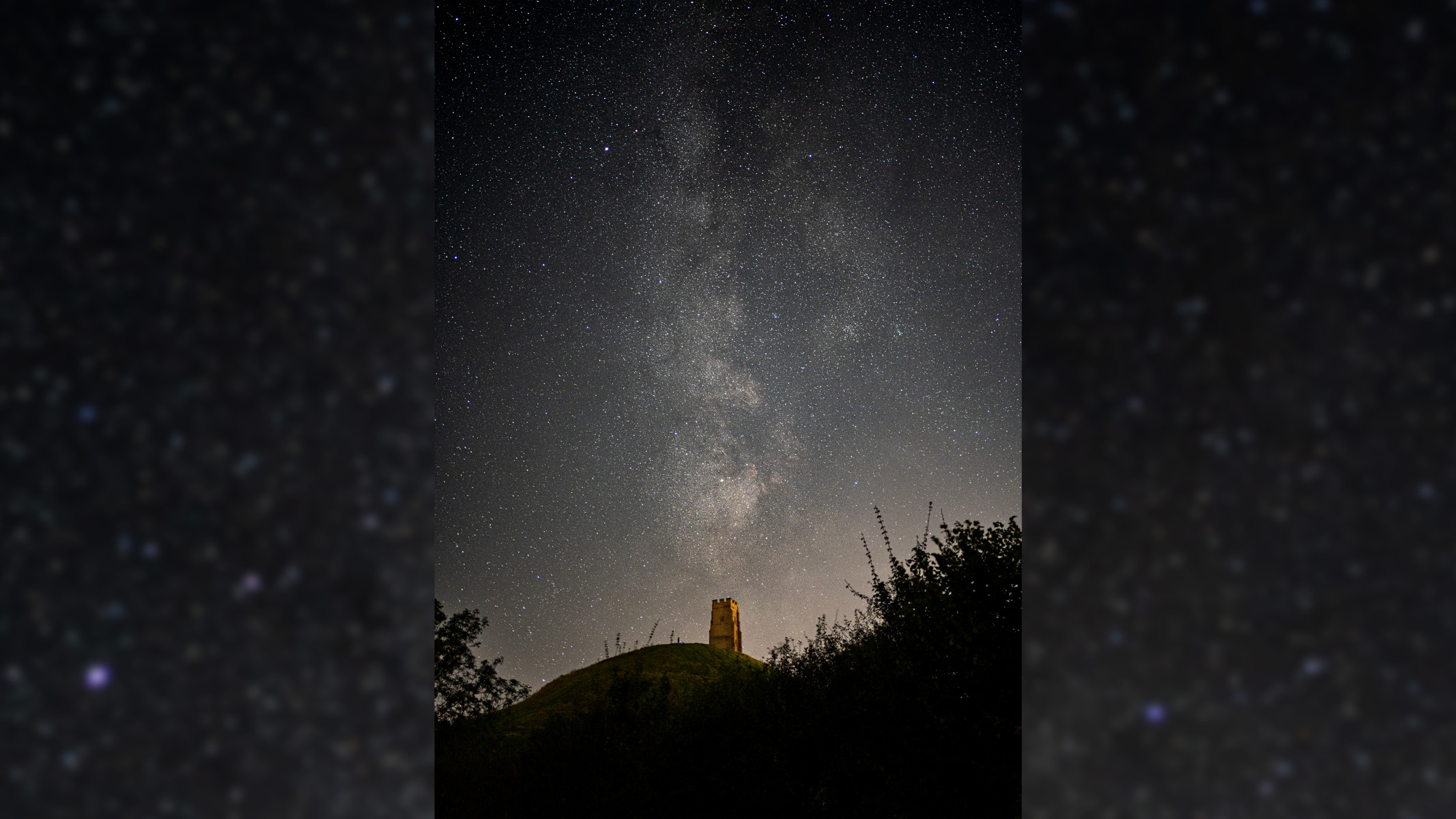
For astrophotography, this is one of the best Sony cameras we've tested, period. Its high ISO performance is astounding, and it also has a hidden feature called 'bright monitoring' to help you compose your image in the dark. As the name suggests, it brightens the monitor so you can see your composition better — which is very useful for astrophotography (it won't change the outcome of your image, just the monitor). There are some caveats — it's grainy and not the best quality, and there's a bit of lag if you move the camera, but it enabled us to easily see where the Milky Way was positioned in our shot. All you need to do to set it up is map it to a custom key, then once you press the button to activate it you can see it working in real-time (you need to be in manual focus and manual mode for it to work).

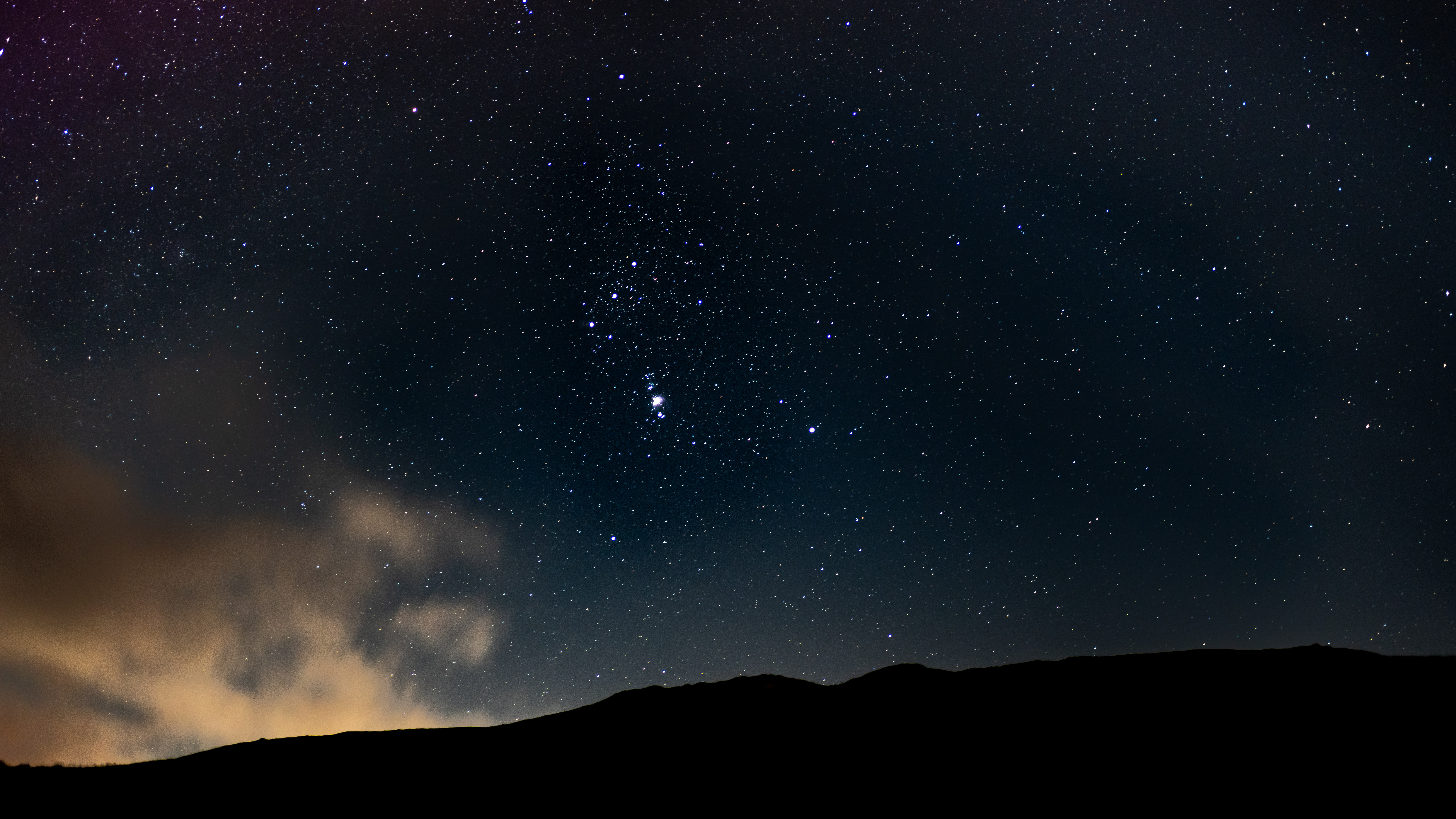
We also jumped at the chance to take the A7 IV out to shoot the aurora borealis on a new moon on a chilly New Year's Day in South Wales. Even under Bortle 4 skies in the Brecon Beacons, the camera was a solid performer and produced minimal noise in our images. The only thing that hampered us was not having a really good astro lens!
Sony A7 IV: Functionality

- 33MP sensor a vast improvement from its 24MP predecessor
- EVF and LCD screen resolution both improved, but still lower than others
- Video frame rates may not be enough for some users
The Sony A7 IV features a newer Bionz XR processor, which is the same one you'll find in the beastly Sony A1 — although the A7 IV doesn't have a stacked sensor as the A1 does, so you won't quite get the same performance. Still, it's definitely an improvement over the A7 III, particularly when coupled with the higher 33-megapixel sensor.
The EVF and LCD screen resolution has also been improved, but we'd still like to see further improvement with the next model to make it more in line with some of the newer Sony cameras. The LCD screen resolution has gone from 921,600 dots up to 1,036,800 dots and the EVF resolution has been increased from 2,359,296 dots up to 3,686,400 dots.
Although any improvement is always a good thing in theory, we feel they perhaps haven't been improved enough to make the difference that noticeable in practice. But that being said, we still found them to be good quality and easy to work with when we tested the camera, so maybe we are just being picky. You can't expect the features of the Alpha range to be equal to the big hitters like the A1 and A7R V, but we still think they could've done a bit more — particularly on the LCD screen.

The Sony A7 IV is without a doubt a fantastic hybrid camera with some pretty powerful photo and video features, but if you're serious about video in particular, we think there could be a potential flaw with this camera.
It can shoot 4K video which is oversampled from the 7K sensor, which is great and produces sharp, noise-free footage even in low light, although serious professional videographers might want to invest more and go for a camera capable of shooting 8K video — like the A7R V or the A1.
The thing about the A7 IV is that although it can shoot up to 4K 60p, the 4K 60p footage is cropped. This could be a dealbreaker for some users, although for anyone capturing footage that is perhaps a bit further away like sports or wildlife, the crop could actually be a blessing! If you want uncropped video for casual content creation or recording your travels you can still shoot 4K 30p, but for higher frame rates we'd suggest looking at other models. That said, it's still miles better than the A7 III in this regard.
Should you buy the Sony A7 IV?
✅ You shoot many different styles: It's a fantastic jack-of-all-trades and will suit many different photographers.
✅ You want a great astro camera: If you mainly shoot astro, this is a fantastic camera. The 33MP resolution and brilliant high ISO performance make it a force to be reckoned with.
❌ You shoot a lot of video: For users who focus more on video and want high frame rates, we think there are better options.
❌ You need a high burst rate: 10FPS is absolutely fine in most situations, but sports and fast-action photographers could often do with more.
If you're making the jump into the full-frame system and can't stretch your budget to the likes of the Alpha R range, the Sony A7 IV is the frontrunner and the obvious choice. It'll suit most photographic styles and performs well for video, it's a fantastic all-rounder and will certainly last you for a long time and be enjoyable to shoot with. It's not without its flaws, but we think it's one of the best hybrid cameras in this price range on the market.
If you specialize in a particular niche, however, it may not be the camera for you depending on the style of photography you shoot. For instance, sports and fast-action shooters will want something with a high burst rate, and the 10FPS on the Sony A7 IV will fall short if you want to advance your skills.
Also, if you already own the Sony A7 III, you'll need to consider whether you think the upgrades are worthwhile enough to warrant moving up to the newer model. We like the addition of the fully articulating screen, plus the improved autofocus and new eye autofocus for animals and birds. But if you shoot astrophotography, the increased megapixel count could result in more noise in your images, and the lower battery life might mean you may not be able to shoot for as long.
Another argument against buying the Sony A7 IV is that it likely won't be too long before they release an A7 V. While there are no rumors or official announcements yet, given the timeline of 3 years and 9 months between the release of the A7 III and the A7 IV, we are on track for there to potentially be talk of the next model towards the end of 2024 or beginning of 2025. Even if you don't want the newer model when it eventually comes out, its release will likely see the A7 IV reduce in price, so if you're not in a hurry you could save yourself some money by waiting.
If the Sony A7 IV isn't for you
If you don't think the Sony A7 IV is right for you after reading this review, here are some alternative options that might suit you a little better.
If you're a professional photographer and want a pro-grade camera with a bit more oomph, we'd recommend the Sony A7R V or the Sony A1. The Sony A7R V is the newer of the two with AI-powered autofocus and incredibly clever technology, and the A1 has a stacked sensor for seriously powerful performance and exceptional images (although the A1 is very expensive).
If, on the other hand, you're more of a beginner and the Sony A7 IV sounds like overkill or out of your budget, the Sony A6700 is a fantastic crop sensor camera with a lot of the newer features Sony is offering for around $900 less than the A7 IV, or if you want the AI autofocus and full-frame sensor in a newer model, check out the Sony A7C II which is a similar price to the A7 IV.

Kimberley Lane, E-commerce writer for Live Science, has tested a wide range of optics equipment reviewing cameras, lenses and tripods, and getting hands-on observations with binoculars and more. Also a landscape & seascape photographer living in South Wales, she aims to portray a feeling of calm and peaceful moments through her images. Her work has also been featured in a number of national photography magazines and she regularly contributes to our sister site Space.com.

